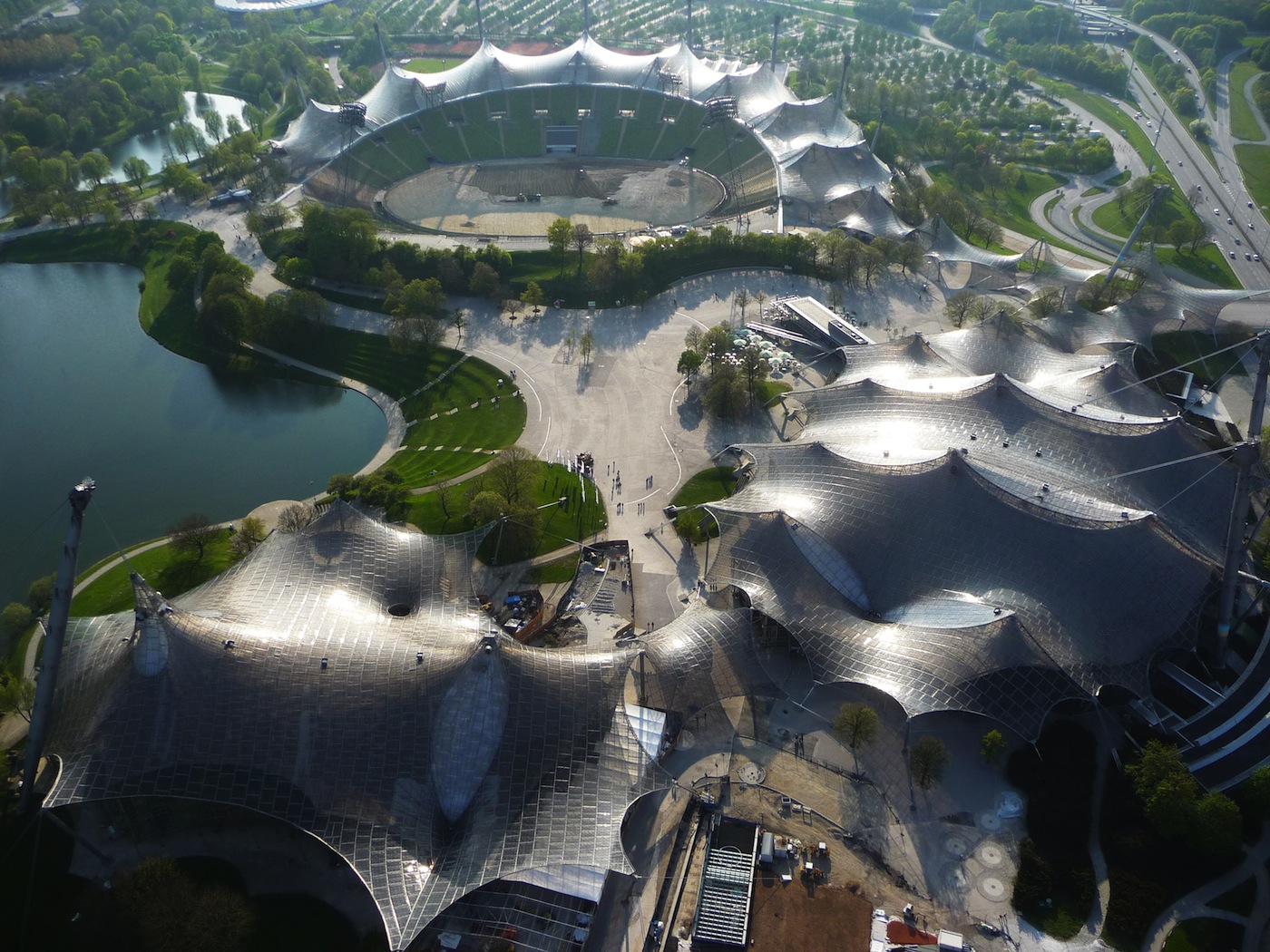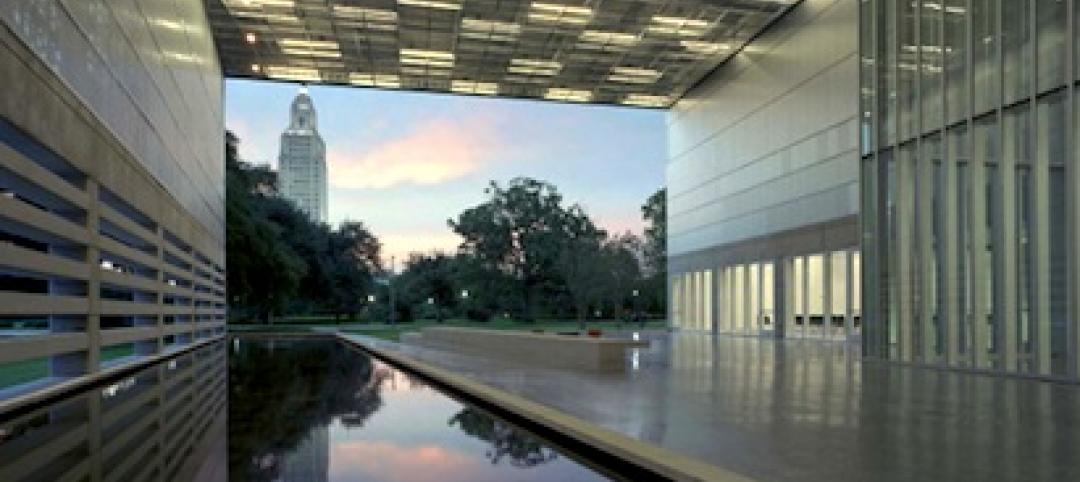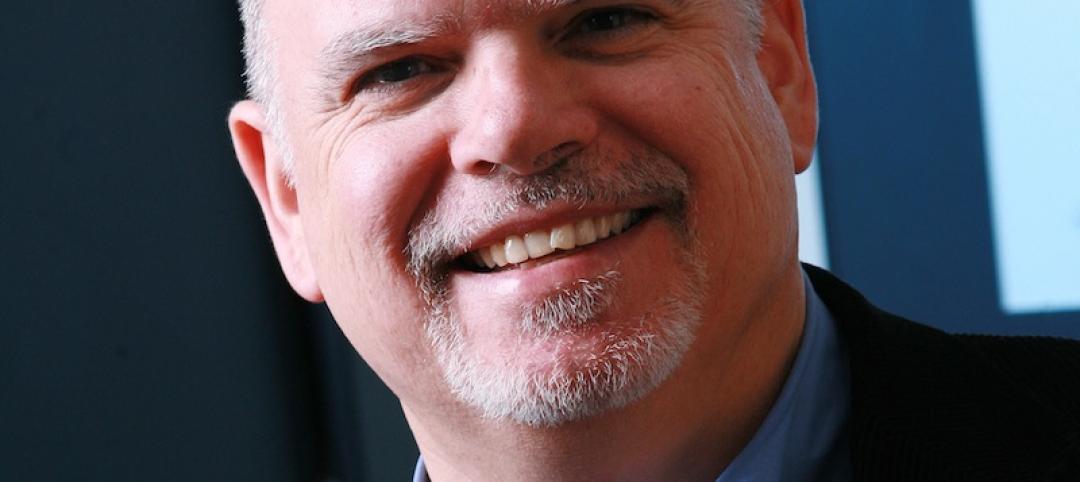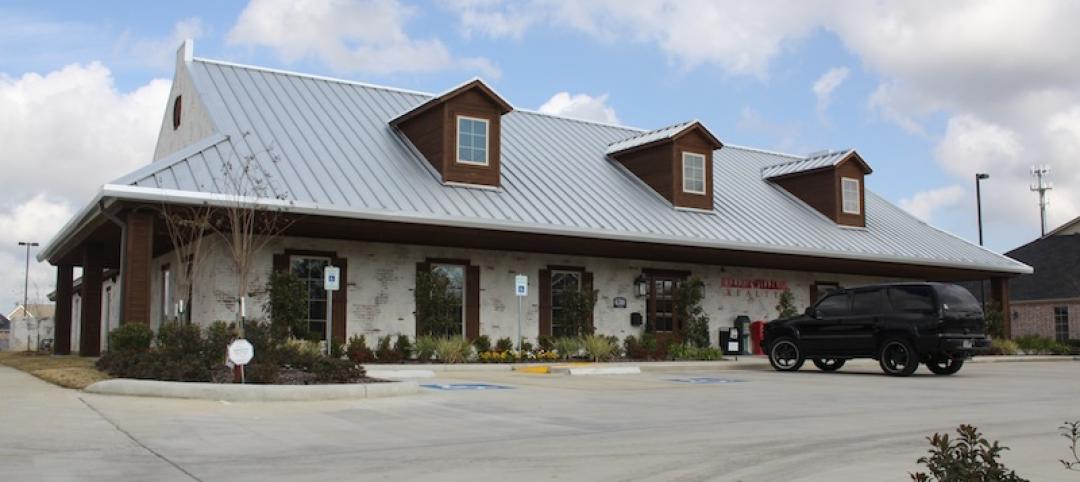Frei Otto has been named the 2015 Pritzker Architecture Prize recipient, Tom Pritzker announced this afternoon. The news comes a day after the visionary architect, 89, died in his native Germany.
Otto becomes the 40th laureate of the Pritzker Prize and the second laureate from Germany.
The Pritzker jury selected Otto as the laureate earlier this year, and shortly thereafter the Executive Director of the prize traveled to Otto’s home and studio in Warmbronn, Germany, to deliver the news in person. Learning that he had received the Pritzker Prize, Otto said: “I am now so happy to receive this Pritzker Prize and I thank the jury and the Pritzker family very much. I have never done anything to gain this prize. My architectural drive was to design new types of buildings to help poor people especially following natural disasters and catastrophes. So what shall be better for me than to win this prize? I will use whatever time is left to me to keep doing what I have been doing, which is to help humanity. You have here a happy man.”
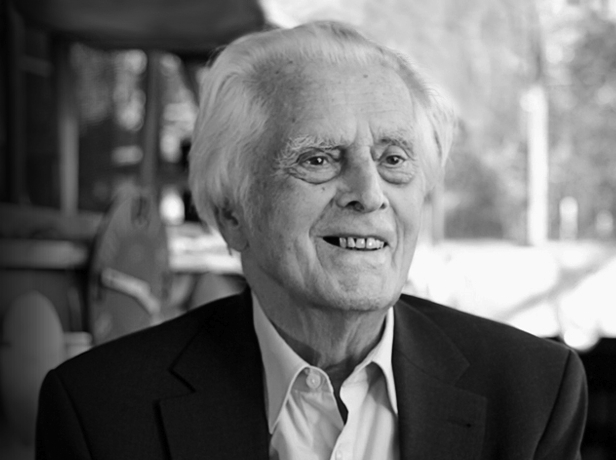 Frei Otto (1925-2015). Photo: Courtesy The Hyatt Foundation
Frei Otto (1925-2015). Photo: Courtesy The Hyatt Foundation
Otto practiced a holistic and collaborative approach to architecture, working with environmentalists, biologists, engineers, philosophers, historians, naturalists, artists, and other architects. A distinguished teacher and author, Otto pioneered the use of modern lightweight tent-like structures for many uses. He was attracted to them partly for their economical and ecological values. He believed in making efficient, responsible use of materials, and that architecture should make a minimal impact on the environment. Otto was a utopian who never stopped believing that architecture can make a better world for all.
In contrast to the heavy, columned, stone and masonry architecture preferred by the National Socialists in the Germany in which he grew up, Otto’s work was lightweight, open to nature and natural light, non-hierarchical, democratic, low-cost, energy-efficient, and sometimes designed to be temporary.
He is best known for the roofing for the main sports facilities in the Munich Olympic Park for the 1972 Summer Olympics (with Behnisch + Partner and others), for the German pavilion at the 1967 International and Universal Exposition (Expo 67), the Japan Pavilion at Expo 2000 in Hannover, Germany (in 2000, with Shigeru Ban, 2014 laureate of the Pritzker Architecture Prize), a series of tent structures for German Federal Exhibitions in the 1950’s, and for his work in the Middle East.
“Our jury was clear that, in their view, Frei Otto’s career is a model for generations of architects and his influence will continue to be felt,” said Tom Pritzker, Chairman and President of The Hyatt Foundation, which sponsors the prize. “The news of his passing is very sad, unprecedented in the history of the prize. We are grateful that the jury awarded him the prize while he was alive. Fortunately, after the jury decision, representatives of the prize traveled to Mr. Otto’s home and were able to meet with Mr. Otto to share the news with him. At this year’s Pritzker Prize award ceremony in Miami on May 15 we will celebrate his life and timeless work.”
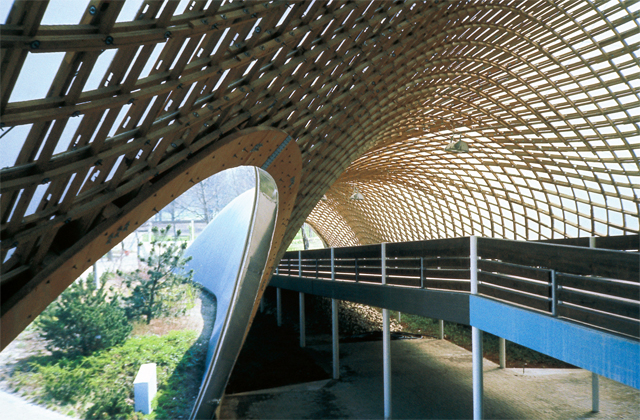 Roof for the Multihalle (multi-purpose hall) in Mannheim, 1970–1975, Mannheim, Germany. Photo © Atelier Frei Otto Warmbronn, courtesy The Hyatt Foundation
Roof for the Multihalle (multi-purpose hall) in Mannheim, 1970–1975, Mannheim, Germany. Photo © Atelier Frei Otto Warmbronn, courtesy The Hyatt Foundation
The Chair of the jury of the Pritzker Architecture Prize, Lord Peter Palumbo, said today: “Time waits for no man. If anyone doubts this aphorism, the death yesterday of Frei Otto, a titan of modern architecture, a few weeks short of his 90th birthday, and a few short weeks before his receipt of the Pritzker Architecture Prize in Miami in May, represents a sad and striking example of this truism. His loss will be felt wherever the art of architecture is practiced the world over, for he was a universal citizen; whilst his influence will continue to gather momentum by those who are aware of it, and equally, by those who are not.”
The Jury Citation
Frei Otto, born almost 90 years ago in Germany, has spent his long career researching, experimenting, and developing a most sensitive architecture that has influenced countless others throughout the world. The lessons of his pioneering work in the field of lightweight structures that are adaptable, changeable and carefully use limited resources are as relevant today as when they were first proposed over 60 years ago. He has embraced a definition of architect to include researcher, inventor, form-finder, engineer, builder, teacher, collaborator, environmentalist, humanist, and creator of memorable buildings and spaces.
He first became known for his tent structures used as temporary exhibition pavilions. The constructions at the German Federal Garden exhibitions and other festivals of the 1950s were functional, beautiful, “floating” roofs that seemed to effortlessly provide shelter, and then were easily dissembled after the events.
The cable net structure employed for the German Pavilion at Expo 67 in Montreal, prefabricated in Germany and assembled on site in a short period of time, was a highlight of the exhibition for its grace and originality. The impressive large-scale roofs designed for the Munich Olympics of 1972, combining lightness and strength, were a building challenge that many said could not be achieved. The architectural landscape for stadium, pool and public spaces, a result of the efforts of a large team, is still impressive today.
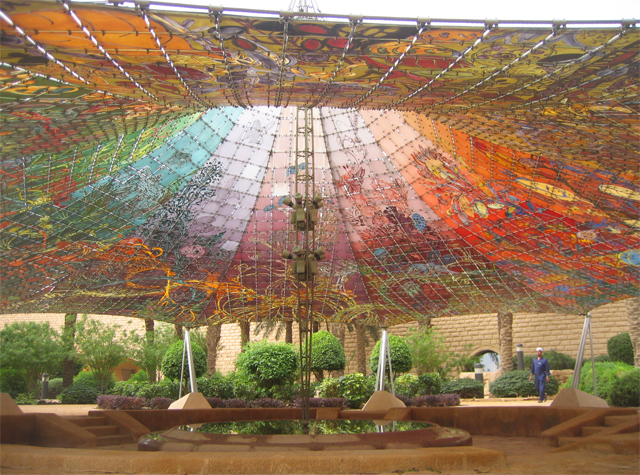 Diplomatic Club Heart Tent, 1980, Riyadh, Saudi Arabia. Photo © Atelier Frei Otto Warmbronn, courtesy The Hyatt Foundation
Diplomatic Club Heart Tent, 1980, Riyadh, Saudi Arabia. Photo © Atelier Frei Otto Warmbronn, courtesy The Hyatt Foundation
Taking inspiration from nature and the processes found there, he sought ways to use the least amount of materials and energy to enclose spaces. He practiced and advanced ideas of sustainability, even before the word was coined. He was inspired by natural phenomena – from birds’ skulls to soap bubbles and spiders’ webs. He spoke of the need to understand the “physical, biological and technical processes which give rise to objects.” Branching concepts from the 1960s optimized structures to support large flat roofs. A grid shell, such as seen in the Mannheim Multihalle of 1974, shows how a simple structural solution, easy to assemble, can create a most striking, flexible space. The Mechtenberg footbridges, with the use of humble slender rods and connecting nodes, but with advanced knowledge, produce an attractive filigree pattern and span distances up to 30 meters. Otto’s constructions are in harmony with nature and always seek to do more with less.
Virtually all the works that are associated with Frei Otto have been designed in collaboration with other professionals. He was often approached to form part of a team to tackle complex architectural and structural challenges. The inventive results attest to outstanding collective efforts of multidisciplinary teams.
Throughout his life, Frei Otto has produced imaginative, fresh, unprecedented spaces and constructions. He has also created knowledge. Herein resides his deep influence: not in forms to be copied, but through the paths that have been opened by his research and discoveries. His contributions to the field of architecture are not only skilled and talented, but also generous.
For his visionary ideas, inquiring mind, belief in freely sharing knowledge and inventions, his collaborative spirit and concern for the careful use of resources, the 2015 Pritzker Architecture Prize is awarded to Frei Otto.
Meet the Jury
The distinguished jury that selected the 2015 Pritzker Laureate consists of its chairman, Lord Palumbo, architectural patron, Chairman Emeritus of the Trustees, Serpentine Galleries, former Chairman of the Arts Council of Great Britain, and former Chairman of the Tate Gallery Foundation; Alejandro Aravena, architect and Executive Director of Elemental in Santiago, Chile; Stephen Breyer, U.S. Supreme Court Justice, Washington, D.C.; Yung Ho Chang, architect and educator, Beijing, The People’s Republic of China; Kristin Feireiss, architecture curator, writer, and editor, Berlin, Germany; Glenn Murcutt, architect and 2002 Pritzker Laureate, Sydney, Australia; Richard Rogers, architect and 2007 Pritzker Laureate, London, United Kingdom; Benedetta Tagliabue, architect and director of EMBT Miralles Tagliabue, Barcelona, Spain; and Ratan N. Tata, Chairman Emeritus of Tata Sons, the holding company of the Tata Group, Mumbai, India. Martha Thorne, Associate Dean for External Relations, IE School of Architecture & Design, Madrid, Spain, is the Executive Director of the Prize.
The 2015 award ceremony will be held in Miami Beach at the New World Center, designed by 1989 Pritzker Prize Laureate Frank Gehry, on May 15, 2015. This marks the first time the ceremony will be in Miami, joining the culturally and historically significant venues around the world. The ceremony will be streamed live on PritzkerPrize.com, the website of the Pritzker Architecture Prize.
About the Pritzker Architecture Prize
The Pritzker Architecture Prize was founded in 1979 by the late Jay A. Pritzker and his wife, Cindy. Its purpose is to honor annually a living architect whose built work demonstrates a combination of those qualities of talent, vision and excellence, which has produced consistent and significant contributions to humanity and the built environment through the art of architecture. The laureates receive a $100,000 grant and a bronze medallion.
Related Stories
| Dec 20, 2013
Must see for the holidays: Architects re-create iconic structures using gingerbread
Gensler, PBK, Page Sutherland Page, and Kirksey were among the firms to compete in the 5th Annual Gingerbread Build-Off.
| Dec 20, 2013
Can energy hogs still be considered efficient buildings? Yes, say engineers at Buro Happold
A new tool from the engineering firm Buro Happold takes into account both energy and economic performance of buildings for a true measure of efficiency.
| Dec 18, 2013
How small architectural firms can make big money
What separates the great-but-struggling designers from the great-successful ones isn't luck. If you're as good an architect as you think, it will take more than your awesome design skills to become successful. Learn how to manage your firm’s finances and go from floundering to flourishing.
| Dec 18, 2013
Eskew + Dumez + Ripple receives AIA's 2014 Architecture Firm Award
The American Institute of Architects (AIA) Board of Directors has voted for Eskew + Dumez + Ripple to receive the 2014 AIA Architecture Firm Award. The firm will be honored at the 2014 AIA National Convention in Chicago. The Board also voted to posthumously honor Julia Morgan, FAIA, with its 214 Gold Medal.
| Dec 18, 2013
Architecture Billings Index takes step back in November
After six months of steadily increasing demand for design services, the Architecture Billings Index paused in November, dipping below 50 for just the second time in 2013.
| Dec 17, 2013
Kahn appoints Alan Cobb President and CEO
Cobb is the tenth president in the firm’s 118-year history. As President, Cobb is responsible for ensuring that all of the firm’s client issues are effectively address and that overall project team performance meets or exceeds client expectations for each and job the firm undertakes.
| Dec 17, 2013
CBRE's Chris Bodnar and Lee Asher named Healthcare Real Estate Executives of the Year
CBRE Group, Inc. announced today that two of its senior executives, Chris Bodnar and Lee Asher, have been named Healthcare Real Estate Executives of the Year by Healthcare Real Estate Insights.
| Dec 16, 2013
Is the metal building industry in a technology shift?
Automation is the future you can’t avoid, though you may try. Even within the metal building industry—which is made up of skilled tradesmen—automation has revolutionized, and will continue revolutionizing, how we work.
| Dec 16, 2013
Why employees don’t trust their leaders
Trust, one of the key elements to productive business relationships, is in short supply these days. An Associated Press-GfK poll discovered that only one-third of Americans say most people can be trusted and nearly two-thirds says “you can’t be too careful” in dealing with people.
| Dec 16, 2013
Construction materials prices remain stable in November
Overall, construction materials prices fell 0.5 percent in November and are up only 1.1 percent year over year, according to the Department of Labor’s Dec. 13 Producer Price Index.


